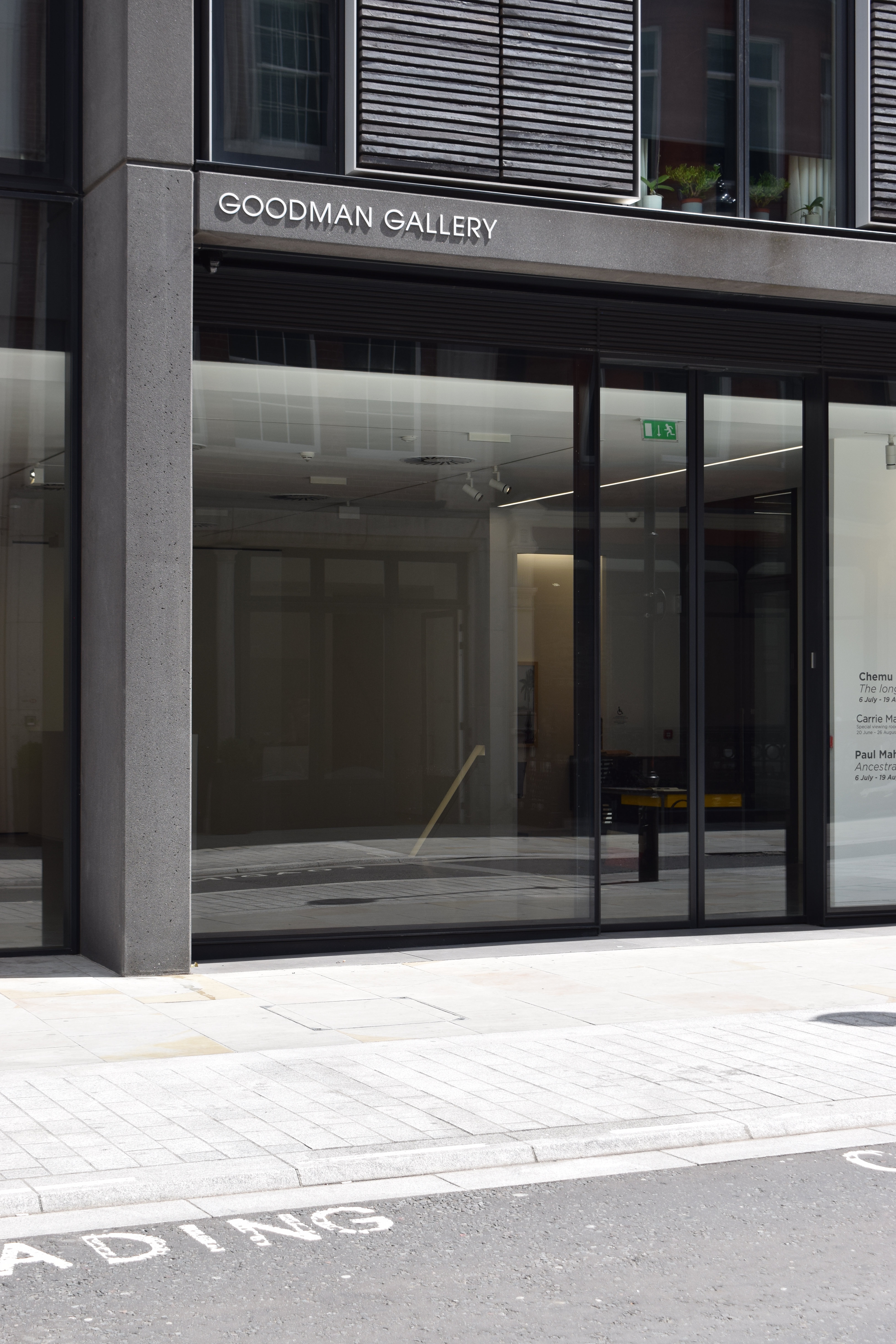
Exploration: The Heartbeat of Creativity
Goodman Gallery
Established in Johannesburg, South Africa in 1966 by Linda Givon, Goodman Gallery has been a significant player in the global art scene, with a particular focus on contemporary art in Southern Africa. The gallery has been instrumental in promoting innovative emerging and established artists, both African-based and international, who work across various media. This commitment to supporting artists' visions and promoting vital dialogue has been a defining characteristic of Goodman Gallery, setting it apart in the art world.
Founded during apartheid, the gallery opened with a show of 30 artists, mostly leading European modernists: Pablo Picasso, Alberto Giacometti, Paul Klee, Joan Miró, Henry Moore. It remained a "resolutely non-discriminatory space", protecting its artists and freedom of expression during the political tumult. Goodman Gallery progressively emerged as one of South Africa's top contemporary art galleries. It focuses on "working with southern Africa's most significant artists, both established and emerging; those from the greater African continent; and international artists who engage with the African context."
In 2008, Liza Essers purchased the gallery and since then, the gallery roster has grown by more than 30 international artists, with a focus on artists from the African Diaspora and beyond. Goodman Gallery has a global programme working with prominent and emerging international artists whose work engages in a dialogue with African and post-colonial contexts. Some of these artists include Ghada Amer, El Anatsui, Candice Breitz, Alfredo Jaar, Grada Kilomba, Kapwani Kiwanga, Shirin Neshat, Ernesto Neto, Tabita Rezaire, Yinka Shonibare CBE, Mikhael Subotzky and Hank Willis Thomas.
In 2016, Goodman Gallery was named one of 500 best galleries worldwide by Modern Painters. It also celebrated its 50th anniversary the same year with the two-part curatorial mission, In Context, co-curated by Liza Essers and artist Hank Willis Thomas that explored notions of African identity in both the United States and Africa. The gallery hosted, for the first time on the African continent, the seventh international conference on African and African American art, Black Portraiture[s] III: Reinventions, Strains of Histories and Culture.
Also in 2016, Goodman Gallery became the first art dealer to sign a permanent lease for Pollen Estate in London, with 5,730 sq ft across the ground and basement floors of the building, which was designed by Rogers Stirk Harbour + Partners. This expansion has allowed the gallery to present a dynamic and diverse program of exhibitions, reflecting the evolving trends and discourses in contemporary art.
Goodman Gallery stands as a testament to the enduring power of art and its ability to inspire, challenge, and engage. Its commitment to showcasing a diverse range of contemporary art, fostering relationships with artists and institutions, and maintaining a dynamic exhibition programme has solidified its status as a beacon of contemporary art. As it looks to the future, Goodman Gallery will undoubtedly continue to be a vital part of the global art scene, championing the work of artists and contributing to the global discourse on contemporary art.

Exploration: The Heartbeat of Creativity
Goodman Gallery
Established in Johannesburg, South Africa in 1966 by Linda Givon, Goodman Gallery has been a significant player in the global art scene, with a particular focus on contemporary art in Southern Africa. The gallery has been instrumental in promoting innovative emerging and established artists, both African-based and international, who work across various media. This commitment to supporting artists' visions and promoting vital dialogue has been a defining characteristic of Goodman Gallery, setting it apart in the art world.
Founded during apartheid, the gallery opened with a show of 30 artists, mostly leading European modernists: Pablo Picasso, Alberto Giacometti, Paul Klee, Joan Miró, Henry Moore. It remained a "resolutely non-discriminatory space", protecting its artists and freedom of expression during the political tumult. Goodman Gallery progressively emerged as one of South Africa's top contemporary art galleries. It focuses on "working with southern Africa's most significant artists, both established and emerging; those from the greater African continent; and international artists who engage with the African context."
In 2008, Liza Essers purchased the gallery and since then, the gallery roster has grown by more than 30 international artists, with a focus on artists from the African Diaspora and beyond. Goodman Gallery has a global programme working with prominent and emerging international artists whose work engages in a dialogue with African and post-colonial contexts. Some of these artists include Ghada Amer, El Anatsui, Candice Breitz, Alfredo Jaar, Grada Kilomba, Kapwani Kiwanga, Shirin Neshat, Ernesto Neto, Tabita Rezaire, Yinka Shonibare CBE, Mikhael Subotzky and Hank Willis Thomas.
In 2016, Goodman Gallery was named one of 500 best galleries worldwide by Modern Painters. It also celebrated its 50th anniversary the same year with the two-part curatorial mission, In Context, co-curated by Liza Essers and artist Hank Willis Thomas that explored notions of African identity in both the United States and Africa. The gallery hosted, for the first time on the African continent, the seventh international conference on African and African American art, Black Portraiture[s] III: Reinventions, Strains of Histories and Culture.
Also in 2016, Goodman Gallery became the first art dealer to sign a permanent lease for Pollen Estate in London, with 5,730 sq ft across the ground and basement floors of the building, which was designed by Rogers Stirk Harbour + Partners. This expansion has allowed the gallery to present a dynamic and diverse program of exhibitions, reflecting the evolving trends and discourses in contemporary art.
Goodman Gallery stands as a testament to the enduring power of art and its ability to inspire, challenge, and engage. Its commitment to showcasing a diverse range of contemporary art, fostering relationships with artists and institutions, and maintaining a dynamic exhibition programme has solidified its status as a beacon of contemporary art. As it looks to the future, Goodman Gallery will undoubtedly continue to be a vital part of the global art scene, championing the work of artists and contributing to the global discourse on contemporary art.
Other Galleries